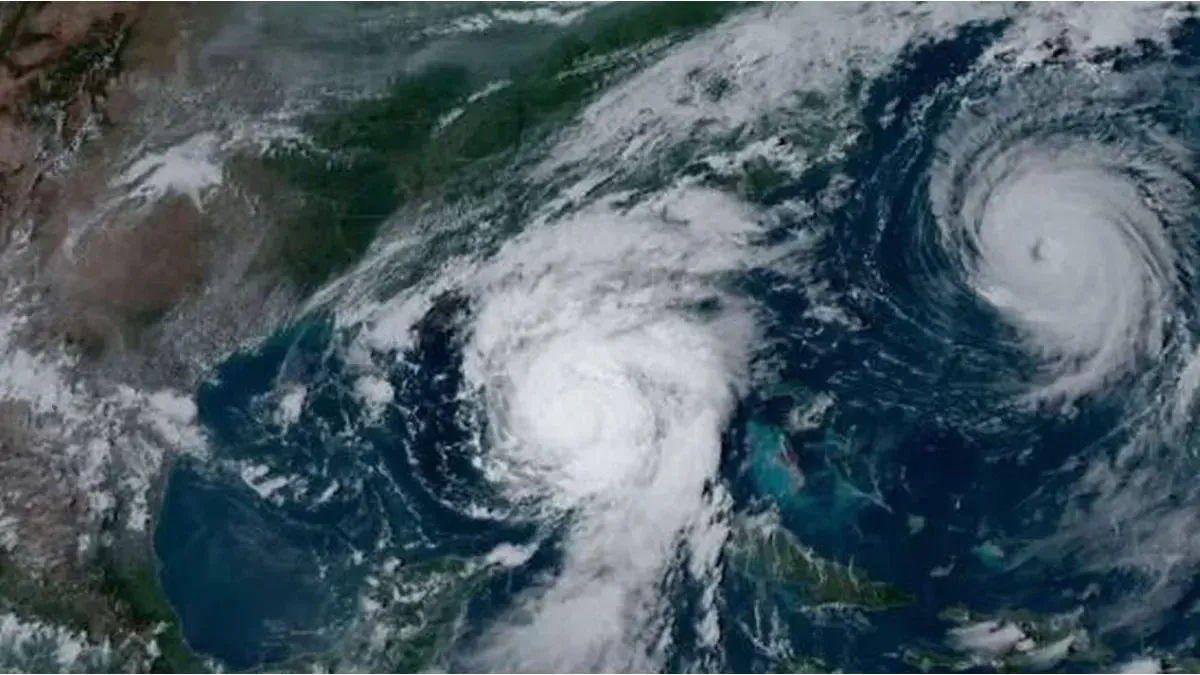The tropical storm Miltonwhich is heading towards the state of Florida (United States) It became a category 1 hurricane (out of 5), the Hurricane Center (NHC) of that country announced on Sunday.
The hurricane is expected to strengthen further into a “major magnitude” one, the US agency warned, according to which Milton should make landfall in the middle of next week on the west coast of the state of Florida, an already devastated region. due to the passage of Hurricane Helene a few days ago.
Milton became a hurricane and heads towards Florida
The hurricane has winds of 128km/haccording to the latest update from the NHC. It is currently over the Gulf of Mexico, 1,336 kilometers from Tampa, Florida, and is expected to reach Category 3 when it reaches Florida on Wednesday.
“There is an increasing risk of storm surge and life-threatening winds along parts of the west coast of the Florida panhandle beginning Tuesday night or Wednesday,” the NHC added in another statement.
Major hurricane is a term designated for hurricanes of category 3 or higher on the Saffir-Simpson scale. For a hurricane to become a Category 3 storm, the winds at its center must be sustained at 178 km/h.
The areas affected by Milton
Milton is expected to make landfall on Wednesday somewhere between Cedar Key and Napleswhich includes the entire Tampa Bay area.
Tampa, Orlando and Miami are forecast to receive 100 to 200 millimeters of rain through Thursday. For Miami, this is equivalent to an entire month of rain (the October average is 194 millimeters). For Orlando, this would be equivalent to 2 months of rain (October average is 88 millimeters). For Tampa, this would be equivalent to three months of rain (the October average is 59 millimeters).
Some locations in the central part of the state could see more than 254 millimeters of rain in total. This means cities like Fort Myers and Sarasota could end their wettest October on record by the end of this week. Tampa could end up with its second wettest October on record.
hurricane milton affected areas.jpeg
The areas that will affect Milton, according to the projections of the NHC of the United States.
According to data from Climate Central, the warm ocean temperatures fueling Milton’s force are much more likely due to human-induced climate change.
Heavy rainfall is a growing concern, the NHC says: “Rainfall amounts of 5 to 8 inches (130 to 200 mm), with localized totals of up to 12 inches (300 mm), are expected across parts of the Florida peninsula and the Keys through Wednesday night. “This rainfall will bring the risk of flash, urban and area flooding, along with minor to moderate river flooding.”
Meteorologists advise residents to have their hurricane plan in place, follow the advice of local officials, and check back for forecast updates.
Meanwhile, tropical storm warnings in Mexico have become tropical storm warnings from Celestún to Cabo Catoche. Tropical storm conditions are expected starting Monday for the northern Yucatan Peninsula.
51 Florida counties under emergency
Florida Governor Ron DeSantis expanded the state of emergency to cover 51 counties ahead of Hurricane Milton, which is forecast to hit the state mid-week, as the state continues to deal with the aftermath of Hurricane Helene.
An executive order issued by the governor on Saturday had declared a state of emergency in 35 counties. But DeSantis said at a news conference Sunday that he had expanded the order to facilitate the movement of state resources ahead of any potential impact from the hurricane.
The counties under the order are: Alachua, Baker, Bradford, Brevard, Broward, Charlotte, Citrus, Clay, Collier, Columbia, DeSoto, Dixie, Duval, Flagler, Gilchrist, Glades, Hamilton, Hardee, Hendry, Hernando, Highlands, Hillsborough , Indian River, Lafayette, Lake, Lee, Levy, Madison, Manatee, Marion, Martin, Miami-Dade, Monroe, Nassau, Okeechobee, Orange, Osceola, Palm Beach, Pasco, Pinellas, Polk, Putnam, Sarasota, Seminole, St .Johns, St. Lucie Sumter, Suwanee, Taylor, Union and Volusia.
The statement added that, as part of an effort to clean up debris caused by Helene, “disaster waste management sites and landfills in all counties affected by Hurricane Helene will remain open and allow delivery of debris for 24 hours.” .
Source: CNN and AFP
Source: Ambito




